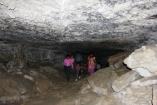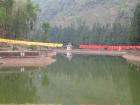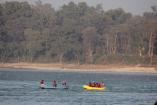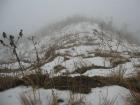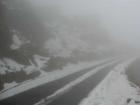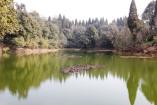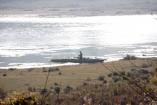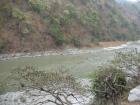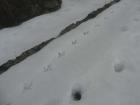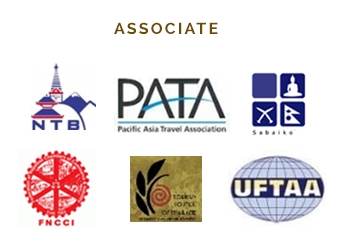WELCOME TO TIBET

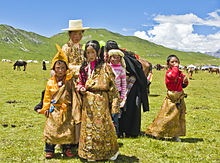
Tibet is a rich and beautiful land with an average altitude over 4000 meters above sea level. There are more than fifty peaks above 7000 meters. Tibet is home to eleven Himalayan mountains over 8000 meters. China, India, Nepal, Sikkim, Bhutan, Burma and Kashmir borders Tibet. Legally Nepal and China are the two exit points for Tibetans. The People and Culture are unique. Nearly two million people inhabit this land of rich natural resources and ancient cultures. Spiritual traditions, temples and monasteries, lakes and rivers, and mighty snow clad peaks are just a few of the intoxicating wonders. A place for tourist to experience the adventurous country and with hundred percent satisfactions.
Buddhism is born here in different way with a history of some 1,300 years is shaped into a unique form. Tibetan history, culture and religion are mixed together and infiltrate every aspect of social life. Religious arts have a distinctive style with Indian and Chinese Buddhist influence. It forms a pearl of Oriental Buddhist culture and art. People living on the Tibetan plateau, such as Tibetans, Monpas, Lhopas and Moslems, have their own ways of living. Each festival, marriage, burial and other ceremonies have a distinctive style. Festivals in Tibet are in big variety. The Tibetan New Year, the largest festival, is followed by others such as the Wangkor Festival and horse races. For the dead, sky burials, water burials, cremations and stupa burials are practiced but the sky burial is the most common.
Science and culture in Tibet include technology, medicine, Buddhist philosophy, drama, astrology, etc. Tibet is known as the land of Songs and Dances; folk songs and dances are diverse, especially during the "Shoton Festival" in August. This unique land is easily accessible from Kathmandu, the capital of Nepal. Schedule air services fly from Kathmandu to Lhasa and back twice a week with some additional flights on a third day of the week. This flight last a little over one hour and gives you a panoramic view of the Himalayas. We arrange for package tour programs to this fascinating land. A trip not be missed in this lifetime! The best season for Tibet tour is from the end March to end November each year. From end November to end March it gets too cold and flights do not operate during this period. Flights operate from first week April to end November every year.
PLACES OF INTEREST
- Potala Palace: Potala Palace, regarded as landmark and the symbol of Tibet, is a great giant palace consisting of many houses, towers, chapels, etc. According to the Guinness Book of World Records, Potala Palace is the highest place in the world. Because of its spectacular architecture style, it is honored as one of the most beautiful architectural building in the world. As the historic ensemble of Lhasa, Potala Palace, together with the exceptional Jokhang temple and Norbulingka is the UNESCO World Heritage Site.The main buildings of Potala Palace are situated on the Red Hill by the side of Lhasa River. It is not only a splendid place, but also a treasure house where you can see precious arts and learn Tibetan culture and history. Because of its brilliant arts and history, travelers see it as the No. 1 must-see attraction in Tibet. By climbing the steps up to the top, you can see the great views of Lhasa city as well as beautiful plateau landscape far away.
- Shannan: Located in the middle and lower stretches of the ancient Yarlung Valley, formed by the Yarlung Tsangpo River, the Shannan Prefecture is known as the birthplace of Tibetan civilization. It is bounded by prefectures of Lhasa on the north, Nyingchi to the east, Shigatse on the west, and the International border with India and Bhutan on the south.
- Gyantse: Different from other scenic spots celebrating Tibetab Buddhism, Gyantse Dzong (Dzong Fortress) is famous for a patriotic story. In 1904, British troops invaded Gyantse but encountered fierce opposition from the strong and brave Gyantse people. They defended their city from a fortress on Zongshan Hill, using primitive guns and cannons, swords, and even bows and arrows to fight against their invaders. The famous cliff where this fight took place is located in the center of Gyantse. It is 125-meter high and has an altitude of 4,020 meters.On the site there are the former residence of one of the commanders and some vestiges of the emplacement.
- Nyingchi: Nyingchi is a prefecture lying in the southeastern area of Tibet. It borders with Lhasa to east, Shannan to southwest, Qamdo to south and Nagqu to north. Literally meaning the Throne of Sun, Nyingchi gets its name because of its special location. For other areas in Tibet, Nyingchi is the place where sun rises visually. Traveling in Nyingchi is a unique experience. On the barren Qinghai-Tibet Plateau, you hardly believe that there is such a picturesque and fertile heaven land in wild Tibet. Nyingchi is blessed with beautiful lakes, deep gorges, immense forests, azalea-filled meadows etc.
- Nagqu: Nachu Prefecture stands in the vast land of northern Tibet Autonomous Region, neighboring Xinjiang Uygur Autonomous Region and Qinghai Province to the north. Within Tibet, it is bordered by Chamdo Prefecture to the east, Lhasa to the south and Ngari to the west. The Horse Racing Festival, held every August, is quite an occasion to admire the natural landscape and folkcustoms of the grassland of northern Tibet. The unpopulated area in northern Tibet is mysterious for tourists. Wild yaks and antelopes inhabit this land. Rock paintings discovered in the undeveloped virgin ground add more mystery and charms to the deserted landscape. Belonging to the second frigid climatic zone, the region is characterized by high altitude, coldness, lack of oxygen, dry and windy weather. Its annual average temperature falls around -3.3℃to -0.9 (26.1-30.4℉). November to March is the dry season. The weather is warm during the period from May to September, and this is the golden season for the grassland there.
- Ngari: Ngari Prefecture is a prefecture of China's Tibet Autonomous Region. Its capital is Gar County. Its administrative centre is the town of Burang Town. The largest settlement is Shiquanhe. Ngari Prefecture includes part of the Aksai Chin area, a disputed region claimed by India but over which China exercises administrative control. The town of Ngari lies 4,500 metres (14,800 ft) above sea level in northwest Tibet some 1,600 kilometres (990 mi) west of the capital, Lhasa. Ngari was once the heart of the ancient kingdom of Guge. Later Ngari, along with Ü and Tsang, composed Ü-Tsang, one of the traditional provinces of Tibet, the others being Amdo and Kham. Ngari is best known for Mount Kailash, also called Sumeru, and Lake Manasarovar. Mount Kailash is 6,714 m (22,028 ft) above sea level and is the main peak of the Transhimalaya (also called the Kailash Range or Gangdisê Mountains).
- Chamdo: The Chamdo Prefecture is situated in eastern Tibet, neighboring the Nyingchi Prefecture in the southwest and the Nakchu Prefecture in the northwest. It is separated from the Garze Tibetan Autonomous Prefecture in Sichuan by the Jinsha River in the east. To the southeast is the Diqing Tibetan Autonomous Prefecture of Yunan, and to the north lies the Yushu Tibetan Autonomous Prefecture of Qinghai. The Prefecture has a continental plateau climate characterized by low temperatures. It has two distinct seasons, a rainy season from May to September and a dry season from October to April. Its weather varies greatly due to the complex geography. For example, its southeast region is warmer and wetter than the north and northwest. It enjoys strong sunshine and the daylight hours are long.
- Jokhang Temple: Jokhang Temple (or Jokhang Monastery) is the spiritual center of Tibet and the holiest destination for all Tibetan pilgrims. It is is listed in the World Cultural Heritages with Potala Palace and Norbulingka. Situated at the heart of the old town of Lhasa and surrounded by Barkhor Street, this 4 storied building, built in the 7th century by Songtsan Gambo, with roofs covered with gilded bronze tiles, demonstrates a combination of the architectural style of Han, Tibetan, India and Nepal, as well as a Mandala world outlook of Buddhism. It was originally called the 'Tsuklakang' (Tsulag Khang) - 'House of Religious Science' or 'House of Wisdom' during the Bon period of Tibet, which is referred to geomancy, astrology, and divination of Bon. Today it is more commonly known as the Jokhang, which means the 'House of the Buddha'. Visiting Jokhang Temple for a real discovery tour in the mysterious and sacred land, you can get close to the religious part of Tibet and experience the devotion of Tibetans.
- Namtso Lake: Namtso Lake is the largest lake in Tibet, the 2nd largest salt water lake in China (the 1st largest is Qinghai Lake), and the world’s highest lake. It is located between the Damxung County of Lhasa and the Bango County of Nagqu region. In the Tibetan language, “Namtso Lake” means “Heavenly Lake”. The lake surface is at 4,740 meters above sea level, measuring about 70 kilometers long and 30 kilometers broad, with a surface area of 1,920 square kilometers. Because of the high altitude, you’ll need to acclimatize in and around Lhasa for a few days before heading this way. It is not unusual for visitors to get altitude sickness on an overnight stay out at the lake.
- Tashi Lhunpo Monastery: Tashilhunpo, one of Tibet's most important monasteries, is a Geluk monastery in Shigatse that was founded in 1447 by the First Dalai Lama Gendun Drub, whose remains are interred at the site. The location of the monastery is west of the great fortress and above a pre-existing sky-burial site. The monastery serves as the seat of the Paṇchen Lama incarnation line. The remains of the Second, Third, and Fourth Pachen Lama, who was tutor to the Fifth Dalai Lama, are also preserved in a stupa at Tashilhunpo.
- Pangong Tso Lake: Pangong Tso lake is a lake in the Himalayas situated at a height of about 4,250 m (13,900 ft). It is 134 km (83.3 mi) long and extends from Ladakh to Tibet. Two thirds of the length of this lake lies in Tibet. The lake is 5 km (3 mi) wide at its broadest point. In winter, the lake surface freezes completely despite being salt water. The lake is famous for the schizothoracin, a kind of carp unique in Tibet. The fish is known as “Crack-Bellied Fish” because at its anus and anal fins large scales that appear like a long crack long the belly. This fish has evolved to meet the harsh conditions of the Tibetan Plateau. Pangong Lake can be reached in a 5-hour drive from Leh, most of it on a rough and dramatic mountain road. The road crosses the villages of Shey and Gya and traverses the Changla Pass, where army sentries and a small teahouse greet visitors. The first glimpse of the tranquil, azure blue water and shaky lakeshore remains deeply in the memory of tourists. You will realize that the undisturbed animals and the undeveloped landscape are the most precious pictures.
- Lake Rakshastal: Lake Rakshastal is lying close to the west of Lake Manasarovar and Mt. Kailash. Its salty water, a stark contrast to the fresh water of Lake Manasarovar, produces no waterweeds or fish. Named "lake of the demon", it is considered to be the residence of Ravana, the ten-headed demon king of Ceylon in Hindu myth. However, despite its notoriety, Lake Rakshastal bears no less beauty than other lakes in Tibet.
- Yamdrok Lake: Yamdrok Lake is one of the three largest sacred lakes in Tibet. It is over 72 km (45 miles) long. The lake is surrounded by many snow-capped mountains and is fed by numerous small streams. The lake does have an outlet stream at its far western end. Around 90km to the west of the lake lies the Tibetan town of Gyantse and Lhasa is a hundred km to the northwest. According to local mythology, Yamdrok Lake is the transformation of a goddess.
- Lake Manasarovar: Lake Manasarovar is among the world’s highest fresh-water lakes. At an elevation of 4,583 meters, the lake covers 412 square kilometers. With the northern part broader than the southern end, the deepest point of the lake is over 70 meters. The lake is purer than a sapphire and one can see through dozens of meters into the lake. The lake is located in the Burang County, 20 km southeast of the Mount Kailash. In Tibetan language, Manasarovar means “invincible lake”. In “Regions In Great Tang”, wrote by monk Xuanzang, Lake Manasarovar was regarded as the sacred Yaochi Lake of Nirvana. In the 11th century Buddhism won in the competition against the local Bon Religion and changed the lake’s name from “Machui Co” into “Manasarovar”, which means the “Invincible Lake”, in the hope of winning more believers in Tibet.
Link :-
- By Airways - There are few civil airports in Tibet namely Lhasa Gonggar Airport, Qamdo Bangda Airport, Nyingchi Airport and the Gunsa Airport. Gunsa Airport in Ngari Prefecture began operations from 2010. The Peace Airport for Xigazê Prefecture is operational from 2010. Nagqu Dagring Airport is expected to become the world's highest altitude airport by 2014 at 4,436 meters above sea level.
- By Railways - Practically speaking no railways is possible to operate in this region yet the Government of China has started the Qingzang Railway. Qingzang Railway connecting the TAR to Qinghai Province is one of the world best train service started by the Peoples Republic of China.
- By Roadways - There are five highways to Tibet, namely the Sichuan Tibet Highway, Xinjiang Tibet Highway, Qinghai Tibet Highway, Nepal Tibet Friendship Highway and Yunnan Tibet Highway.Due to the poor and rough road conditions, driving to Tibet used to be extremely difficult. However, in recent years, transport services, self-drive tours to Tibet have been becoming increasingly popular. Among the five highways, only Qinghai-Tibet Highway and Sino-Nepal Friendship Highway are open to foreigners at present.
- Get in touch
Get In Touch
India:
Red Planet Tours & Travels
Elite Plaza (opp. Vishal Cinema)
2nd Mile, Sevoke Road
Siligur - 734001
Phone: +91 353 2540258(IND)
Nepal: Kathmandu
Red Planet Tours & Travels
Near Hotel Yak & Yeti Road,
Yak & Yeti Lane
Durbar Marg, Kathmandu, Nepal
Phone: +977 1 4230683
Nepal: Kakarbhitta/Kakarvitta
Red Planet Tours & Travels
Main Road, Mechinagar Nagarpalika - 06
Post: Kakarvitta, Jhapa, Nepal
Phone: +977 23 562216 / 563526











